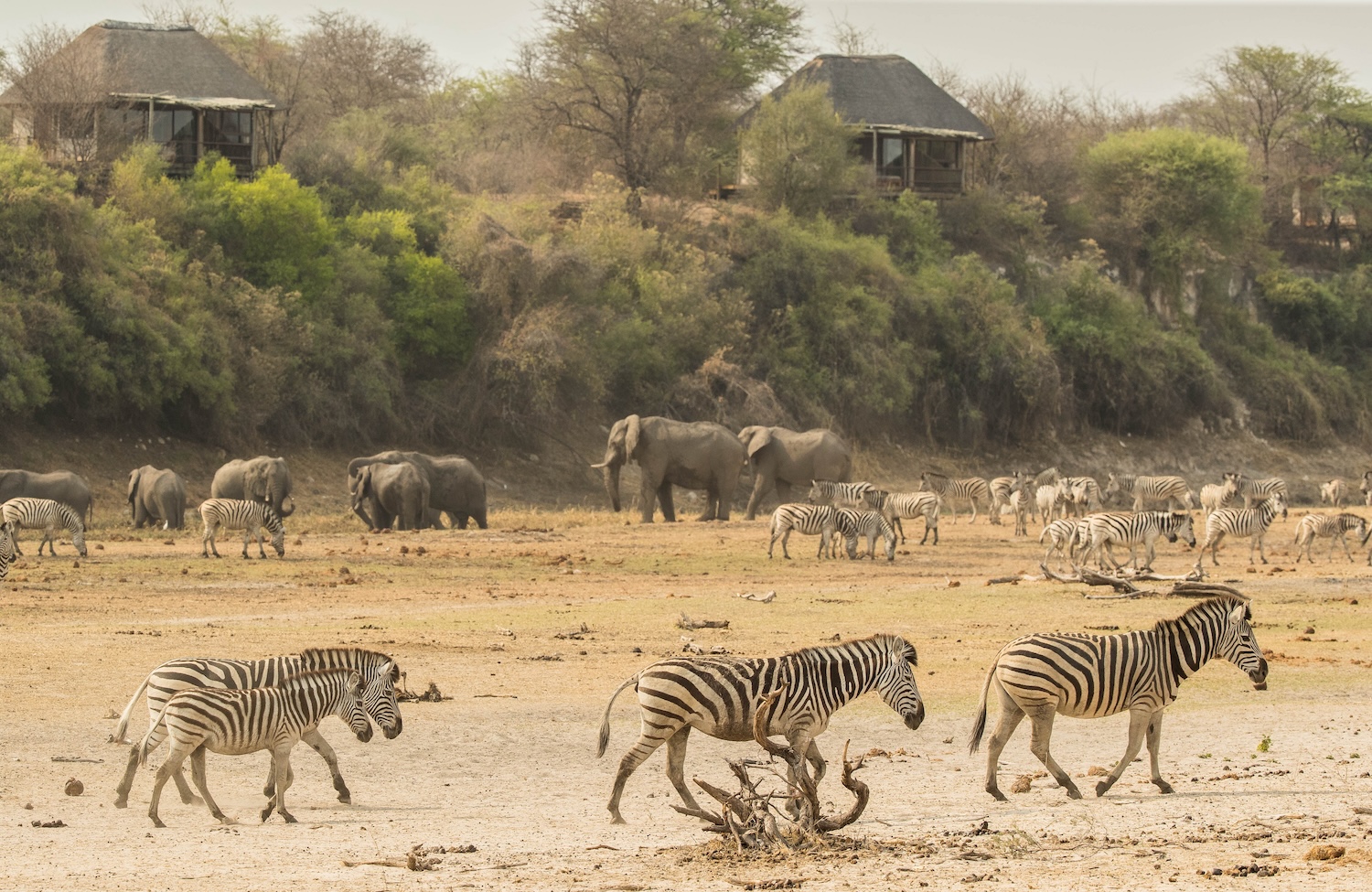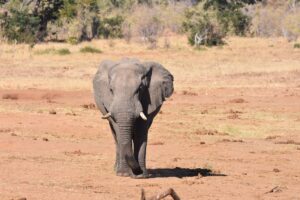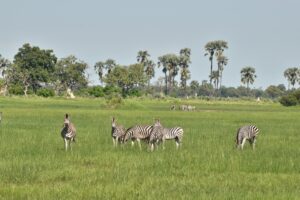
Our February 2024 Special Edition newsletter highlighted the Green Season in Botswana – after one of our specialists, Anton Walker, travelled to the Okavango Delta in January. On paper, January is one of the wettest months of the year in Botswana, with torrential afternoon thunderstorms. Yet Anton had great game viewing and only a little rain. This change is evident outside of Botswana too.
As old Africa hands, the increasingly unpredictable weather patterns in the region are something we’ve been conscious of for some time. While it’s important to keep in mind that long dry spells are common here, this year we’ve been looking more closely at the rainfall data across the subcontinent and it’s clear that, in several areas, the rains have been considerably lighter than normal.
Parts of Zambia – generally the areas that include many national parks and game reserves – have experienced their driest February in 40 years, while the Zambezi River is currently at its lowest level for several years, similar to conditions in 2018/2019. At Katima Mulilo, where the Zambezi turns from its source to head westwards towards Victoria Falls, it’s depth is notably 3.4m lower than this time last year. In neighbouring Namibia, the rainfall charts read similarly. This rainy season (normally November to April), Namibia’s capital city, Windhoek, has received about 84% of its average rainfall, but perhaps more significant, are the satellite images which compare precipitation change over time, and display a marked drop in rainfall (a drop of 250mm+) in the traditionally lush Kavango and Zambezi regions (formerly the Caprivi Strip) of the country’s north-east. Everywhere in the region, rain has been light and rivers are lower.
So what does this mean for the 2024 safari season?
We are not hydrologists or climate scientists, but we are a team of wildlife, wilderness and Africa experts, and we do know what this means for travel in the region.
Firstly, and most obviously, with lower rainfall, wildlife begins to congregate at established waterholes and moves towards riverbanks. Usually, these migrations are reserved for the dry season, much later in the year, as water resources diminish. This year, for camps and lodges beside permanent water, there could be some stellar sightings much earlier than usual.
Historically, low rainfall years also coincide with excellent predator sightings: prowling lions, racing wild dogs and alert cheetahs. Even with drier conditions, the early season offers up a bounty of young animals born in the first flush of rain as easy prey. The predators, in peak physical condition thanks to readily available food and water, are looking magnificent at this time of year. It’s our view that action-packed game viewing, impressive looking animals, lush vegetation and a clarity in the air after a little rain, is going to make this early season an especially good one for wildlife aficionados and photographers alike!
We expect the wildlife situation in Botswana and Zimbabwe to be particular good this season. And if the great game isn’t draw enough, keep in mind that fewer people travel at this time of year, increasing your chances of a private vehicle on game drives and providing you with even more exclusive feel in camp. We’ve got some super early-season offers still available for travel to Southern Africa, and we currently have good availability at lodges and camps in these countries for April to June. Given that they’re usually fully booked during the high season, this would be an ideal time to book a cracking early safari!
If you’ve been inspired and want to find out more, give us a call or enquire now to speak to an expert.
*A version of this article originally appeared in the March 2024 Bush Telegraph newsletter. You can read our recent newsletters and sign-up to receive these in your inbox on our Bush Telegraph newsletter page.





